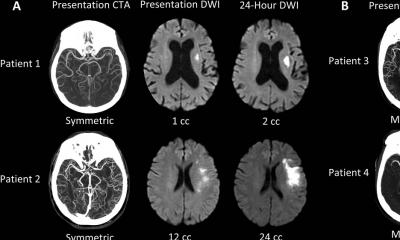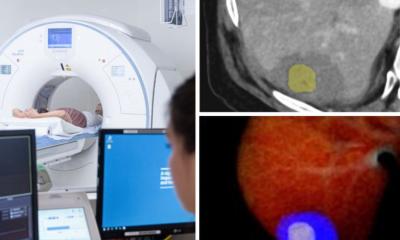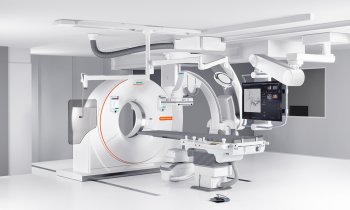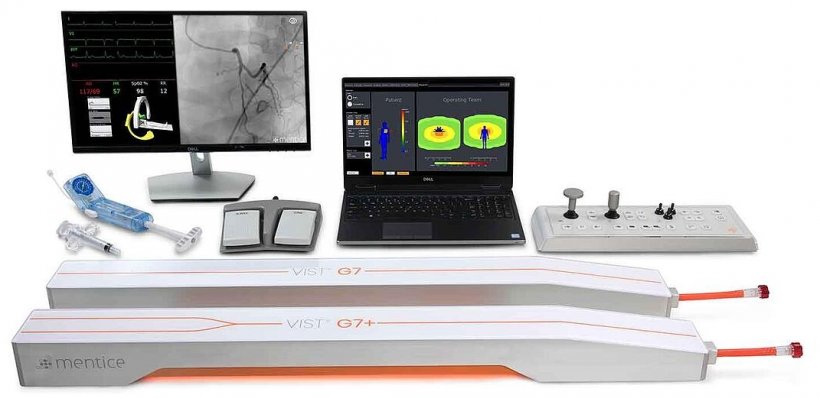
Source: Mentice
Interview • Interventional Radiology
Endovascular simulator – your coach for complex interventions
With interventional procedures becoming more and more complex the demands on the interventionalists are also increasing. Endovascular simulators allow practical angiography training. In December 2020, the University Hospital Essen, Germany, was the first European facility to install Mentice’s VIST G7+. Professor Dr Jens Theysohn, senior physician at the Institute of Diagnostic and Interventional Radiology and Neuroradiology, is enthusiastic: “The seventh generation of the device uses state-of-the-art sensor and haptics technology and includes a software package with a number of newly developed modules for different procedures.”
Interview: Sascha Keutel
EH: What are the advantages of an endovascular simulator?
Theysohn: Angiography is the invasive visualisation of vessels using contrast agents. Usually a so-called puncture needle is inserted in the patient’s vein or artery under local anaesthesia. Depending on the issue at hand and the individual anatomy a catheter is moved to the aorta, the liver or the brain.
The endovascular simulator is a teaching and training tool which allows the user to practice simple as well as complex interventions without a real patient and without radiation exposure.
We can connect the new device to the real angiography system. That means we can practice angiography not only with the simulator‘s remote control but with the real equipment. This reduces the number of clinical training sessions with the actual systems and radiation exposure.
Moreover, we will purchase the SimCore system which allows realistic simulation with visual feedback. On a transparent vessel model movements of the individual catheters and tubes or removal of stents or coils can be simulated and practiced.
How does the VIST G7+ simulator work?
The endovascular simulator is controlled via software on a laptop. The software allows us to precisely define how the catheter should behave. I can also see a virtual x-ray – exactly as during a real angio.
The software package contains training modules for different procedures with many virtual patients that can be worked on. This includes embolization of a liver tumour, prostate enlargement, thrombectomy after a stroke, aneurysm treatment or treatment of acute abdominal bleeding.
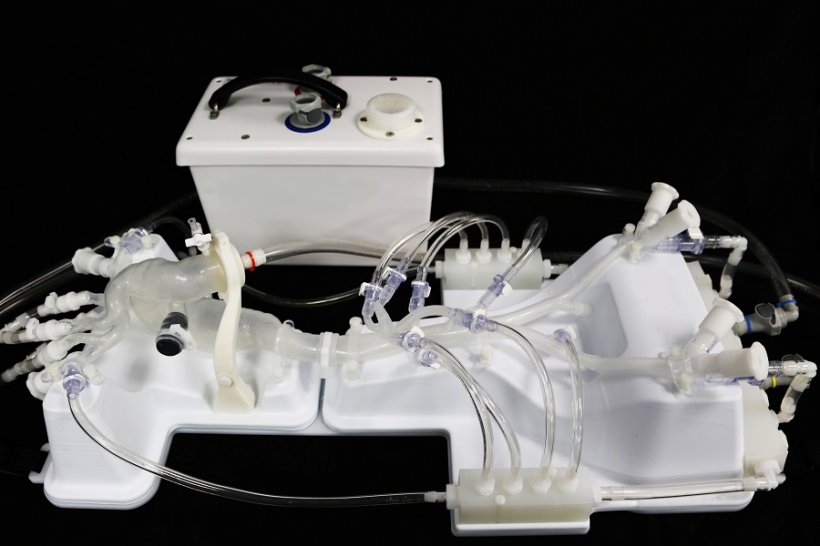
Source: Mentice
What else does the software offer?
The simulation software comes with a training app on the smartphone which allows the user to select certain topics for training. The app presents the topics according to the knowledge and experience level of the user. As soon as a certain knowledge level has been achieved, the app recommends a virtual case. After the first training sessions with the simulator the user can dive deeper into the topic.
Mentice also offers a premium version of their platform with the VIST G7 +. It enables the user to work with two catheter systems and two wires at the same time, for example for balloon-assisted coiling.
With this function the user can plan complex interventions realistically and simulate them, for example when an aneurysm in the brain has to be coiled with a platinum-covered device. If you want to prevent the coil from moving, a second catheter with a balloon has to be inserted. This can now be practised much more easily.
When and where do you use the endovascular simulator?
Today, junior physicians are introduced to angiography in the third or fourth year of their specialist training. In my opinion that’s far too late. They should be exposed to interventions much earlier.
We are using the endovascular simulator – outside everyday clinical work – to give more junior physicians an opportunity to practice working with catheters and guide wires. Thus when they are dealing with their first real patient, they already have some basic experience. The endovascular simulator however is also a helpful tool for more experienced physicians who want to familiarize themselves with new procedures or different organs.
At our university we aim to link preclinical and basic medical training more tightly with real hospital life. Thus several colleagues from intervention and anatomy are working on a joint project with Mentice: they want to develop a software module that helps students study vasculature. This module will allow them to start with rather simple clinical cases and to gain initial experience with the help of the simulator.
01.04.2021



